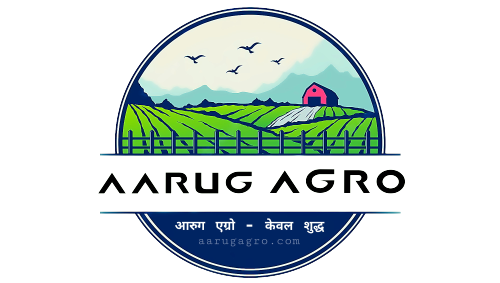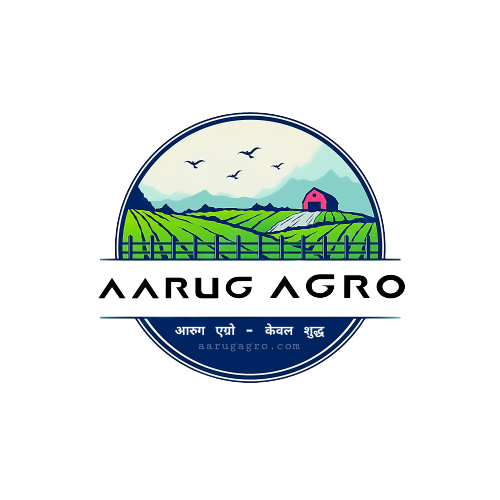Indian Farming : Welcome to all farmers, here are three major types of farming and their procedures. Any country relies heavily on agriculture. This includes growing crops, vegetables, fruits, and flowers. Agriculture is the only source of income for any country. Geographic conditions, demand for products, labor, and technology all play a role in farming.
There are three types of farming:
The following are the three types of agriculture/farming
1. Subsistence farming

-
Farmers who practice subsistence farming do so because they meet the needs of their families. Neither technology nor household labor was required.
-
Farming of this type produces a small amount of food. Old seeds and fertilizer that are not high yielding are not used.
-
There are no facilities for them such as electricity or irrigation. Manual labor is the norm in subsistence farming.
-
There are two types of subsistence farming:-
Subsistence agriculture is intensive:
-
There is a small plot of land for growing crops, simple and low-cost tools, and more labour required. Hard work is implied by the word intensive, so more effort is required.
-
This type of farming is suited for growing multiple crops simultaneously because of the climate, which has a large number of sunny days and fertile soils.
-
This farming is mainly devoted to rice. There are also wheat, maize, pulses, and oilseed crops.
-
Monsoon regions are heavily populated areas where this farming takes place. There are three regions in Asia: the south, the south east, and the east.
Farming for subsistence in the primitive age:
Nomadic herding and shifting cultivation are included.
Cultivation shifting:
-
This cultivation spread throughout thickly forested regions such as the Amazon basin, tropical Africa, and Southeast Asia. Rainfall is heavy in these areas.
-
Vegetation regenerates quickly.
-
The process of shifting cultivation begins with the clearing of the land by burning fallen trees. Soil is then mixed with tree ash.
-
The crops that are grown for cultivation farming include maize, yams, potatoes, and cassava. A crop is grown on this land for a period of two to three years. Due to a decrease in soil fertilizer, the land is left out.
-
Repeating this process on the other land is the next step for the farmers. Agricultural slash and burn is also known as this.
-
Different parts of the world refer to shifting cultivation by different names:
-
Jhumming North East India
-
Milpa Mexico
-
Roca brazil
-
Ladang Malaysia
-
The Nomadic Herd:
-
Semi-dry and dry areas are used for this type of farming. A few parts of India, such as Rajasthan and Jammu and Kashmir, are similar to central Asia.
-
A herdsman moves along defined routes for feeding and water as part of this farming process.
-
Sheep, camels, yaks, and goats are the most commonly used animals in this farming.
-
A herdsman’s family, as well as other members of the community, benefit from this farming by providing milk, meat, and other products.
2. Commercial Farming

-
Crops are grown in this farming for sale in the market. This farming is primarily for business purposes.
-
The project required large areas and a high level of technology.
-
The cost of tools makes it difficult to do.
-
There are three types of commercial farming.
Grain farming commercially:
-
Grain farming is done here.
-
The farming is done during the winter months.
-
It is not possible to grow more than one crop at a time in this farming method.
-
In Europe, North America, and Asia, this farming spread.
-
Farming is a major industry in these areas.
Commercial mixed farming:
-
The purpose of this type of farming is to grow foods, fodder, and other crops.
-
A number of crops can be grown together in this type of farming.
-
Irrigation and rainfall are good.
-
Taking care of the crops is a priority.
-
It takes almost the same amount of time for the crops to mature.
-
The most common places where this farming is used are Europe, the east of the USA, Argentina, southeast Australia, New Zealand, and South Africa.
Commercial plantation farming:
-
Large areas and a lot of labor were required for this farming.
-
Sugarcane, bananas, cotton, rubber, tea, coffee, and cotton were some of the crops used.
-
A farm or nearby factory processes the products.
-
There is no direct sale of these products. A factory or farm roasts these products after they have been grown. Tree crops are all included in this list.
-
In order to transport the products of this farming, large transportation was required.
-
Tropical regions of the world with plantations :
1. Like rubber in Malaysia.
2. Tea in India.
3. Coffee in Brazil.
-
The majority of this farming is done in hilly areas such as the sub-Himalayas, the Nilgiris, and west Bengal.
-
Long periods of time are needed for the products to mature, but they are produced for a long time.
3. Farming at home

-
Terrace farming and gardening are part of home farming.
-
In addition to a garden rake and pruning shear, it also required a small space and a few tools.
-
It is possible to grow any vegetable, fruit, flower, or small tree on the same land with this type of farming.
-
Home decorations can also be made from this farming.
-
There was little labour involved.
-
Commercial and subsistence farming are both practiced here.
A farmer can choose between two types of farming:
Is it true that there are many different types of farming in India? In such a case, we fall under the following types of farming in India. Check out the types of farms for more information.
1. FARMING IN CONTAINER: When your yard, courtyard, or balcony is confined, this farming is used to maximize your space. Almost any vegetable, fruit, or flower can be grown in this farming method.
2. Farming vertically : The garden is described as a window garden. Plants and vines are the most common crops used in vertical farming. A variety of ingredients are used, including gheeya, Loki, tomatoes, chilies, and coriander. Vertical farming is very useful for vine crops since traditional methods produce less vine crops.
Farmer types in India
India’s farmers are its annadata. It takes a lot of effort for them to provide food to the world. Landholdings of the farmers were classified. Here is a list of types of farmers in India. Find out more about the Farmer type.
-
Marginal Farmers – These are farmers with less than 1 hectare of land.
-
Small Farmers – They are farmers with land of 1 to 2 hectares.
-
Semi-medium farmers – These are farmers with a land area of 2 to 4 hectares.
-
Medium Farmers – These are farmers who have four to ten hectares of land.
-
Large Farmers – Farmers who have 10 hectare and above land are called Large farmers. A farmer of this type is also a farmer.
Conclusion
Agriculture is the major source of income in India, and there are many types of farming. There you have it, all the types of farming explained in detail. Stay tuned with us for more posts like this. We also provide daily Agriculture news for you to keep you up to date.


